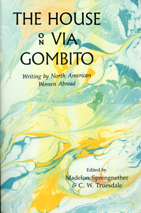After returning to Isla several winters, transferring to Posada del Mar with its pink and white lighthouse, we were forced to pause in planning winter break among the Mayan palms and turquoise sea. Hurricane Gilbert struck the Yucatan in September 1988, the second most powerful Atlantic hurricane on record. Messages filtered north about “our” island: feet of water had swamped it. Everyone was evacuated across the bay to Cancun, or am I making that up? I closed my eyes on the sadness: lovely Isla twisted and wrung out. How many were dead? Would anything be left? We waited. Eventually word came north that the cerviche restaurant with its picture window was intact; even showing a video of the destruction. We phoned Posada and booked a room for late February.
The street of palms along the bay side of town sprouted fledgling green: all the big palms were gone. Our first hotel was smashed: one corner caved in, and sliding glass doors on the ocean-side punched through. Yet, Tony still patrolled the streets in his green-roofed golf cart; chickens still pecked in the sandy street by his once functioning hotel. But Rope-dog had vanished.
Even more dramatic, and oddly welcome: the imposing ocean-front hotel, El Presidente, as arrogant and fancy as a Vogue advertisement, no longer sent white-coated Mexican waiters out to palm-topped cabanas with iced drinks. The beautiful marble floor of the disco was scored with rocks and sand. The stepped roof, mimicking an ancient temple, broken off in places. Yet, El Presidente had reopened, hadn’t it? And the waiters adopted several pelicans, injured in the storm, who followed them around like puppies–Rope-dog’s descendants.
Taxis had somehow emerged from the churning sea and now could take a gringo or local to the other end of the island in under 10 minutes. There over the next decade fancy new hotels in perfect centipede lawns would rise out of the jungle. As we watched the video of Gilbert’s howling, thrashing passage (how anyone had captured such footage, only the Weather Channel could explain), we pressed each other’s hand in relief. None of the graves had washed away; no human Isleno had been lost. But the place had received a sudden pruning. It would take years for the colonnade of palms greeting tourists off the ferries to grow tall enough to be recognizable. And the tiny temple to the goddess, a fake we had to admit, was swept away.
One afternoon as we strolled along the street of T-shirts, a bearded mariner suddenly bolted from his table and accosted my husband, shaking his hand vigorously and ruffling his beard with pleasure. It was Chester Anderson from the University of Minnesota. When he looked lower and recognized me, he did a double-take: why, he’d taught both of us, years apart: Fran as an undergraduate, and I in my Ph.D. program. By the time I arrived at the huge University, the wave of Vietnam protest had subsided. My daughter wasn’t born yet, and Chester was ruffling his beard over Yeats, Frost and Plath (or was the triumvirate different?) Who could have guessed that he would link me with a man I hadn’t yet met, wouldn’t meet for another fifteen years, a man who’d gone to prison as a draft refuser, not simply a conscientious objector but absolutely refusing to participate with his draft board in any way. Yet, here we stood, in the Isla sunshine, waving into the shade where his wife sat, probably used to her husband’s storm of friendship, and later at dinner, perfectly happy to recall my husband’s early impact on her: this youngish man released from prison who was writing sketches of other prison inmates.
They introduced us to the best ice cream I had ever tasted–they, who had been on the island only a few days! My favorite flavor was coconut, creamy, absolutely authentic with real coconut woven through the sweetness. A few days later, after the Andersons had left, and we were shopping for a mask to take home, I paused before the floor-to-ceiling array in the “mask lady’s” shop, which hadn’t been destroyed by Gilbert, even though it hung above the rocks on the ocean’s snarling side. There were snake and lizard-men, wooden fangs opening around the human face; there were wooden mermaids, their tails exotically sequined but their faces oddly impassive. And there were bearded mariners with blue glass eyes, staring vacantly across eons of ocean. It was no surprise to me that they looked like Chester Anderson, handsome and rugged, with their European hawk-beak noses, and long curly beards such as no Isleno with smooth Mayan features could even produce. There, too, were the compelling profiles of Mayan warriors and gods such as I’d puzzled over years before in the jungle temples of Tikal. And jaguars, with orange cat faces dotted with black and whiskered with porcupine quills.
We chose a metal sun fiery red, embracing cooler bluish rabbit moon because our waiter at Posada, whose English far outshone our Spanish, had informed us that to them, there was no man in the moon, which had risen warm and soothing above the placid water, but a rabbit. The combination of heavenly bodies seemed perfect to express our relief at rejoining Isla and at reuniting briefly with Chester Anderson and his wife. It was as if a comet with fiery mane had lit up our past which even then had been slowly moving toward an embrace.


Leave a Reply